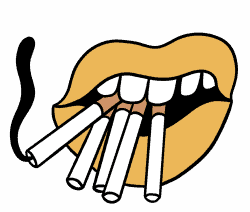The 2017 edition of Health Canada’s survey on substance use sheds light on the use of certain products across several demographics. The findings on smoking divide the data by age, sex and province, also separating e-cigarette use from conventional smoking.
Of particular note from this survey is the rate of smokers among the younger age categories. While the 15-to-19 age bracket sits at 7.9 per cent nationally, here in Saskatchewan, the rate is much higher — at around 22 per cent.
The number of smokers between the ages of 20 to 24 — where a large number of university students find themselves — sits just above their younger counterparts at around 23 per cent provincially, which is seven per cent higher than the national rate.
While 20- to 24-year-olds in Saskatchewan do not hold the highest rate nationally — 24 per cent of individuals in this age demographic smoke in Newfoundland and Labrador — Saskatchewan does have the highest smoking rate amongst 15- to 19-year-olds. Looking at the previous study conducted by Health Canada in 2015, it can be seen that smoking rates have gone up in a number of places, and in some areas, at an alarming rate.
In Saskatchewan, in only two years, the rate of youth smoking went up by roughly eight per cent. The percentage of 20- to 24-year-olds who smoke has remained close to the same during this time, however. Additionally, the provincial average of smokers in Saskatchewan rose by about one per cent between 2015 and 2017.
Also important to note when considering the high percentage of smoking amongst youth is the the age at which they first tried cigarettes. While the age of first consumption for forms of tobacco aside from cigarettes and e-cigarettes is in the later teens or early twenties, the average age of first use of cigarettes was 16 among those who had smoked in the 30 days prior to the survey.
The data for e-cigarette use is rather different than that of conventional smoking. Data on vaping is only available at the national level and shows that 20- to 24-year-olds have the most experience with vaping — with 29.3 per cent reporting that they have tried an e-cigarette, 1.3 per cent reporting daily use and 4.7 per cent reporting occasional use.
In the youth category, 15- to 19-year-olds are second in vaping rates, with 22.8 per cent saying they have tried an e-cigarette.
Due to the harmful nature of cigarettes, these numbers are important to acquiring a better picture of public health and the effectiveness of the prohibitive measures put into place to prevent smoking.
Considering that the 15- to 19-year-old age group has the second highest tobacco use in the province and that a significant portion of this age range is unable to purchase tobacco for themselves legally, it could be inferred that the measures employed during this time were not enough.
In May 2018, the Canadian government updated tobacco legislation to include vaping as well as introduce increased restrictions on cigarettes, while leaving the door open for further restrictions — such as plain packaging. While these changes could prove to be effective, more data won’t be available until after the data from 2019 is compiled.
—
Jack Thompson / Sports & Health Editor
Graphic: Jaymie Stachyruk / Graphics Editor